Let me tell you – New Orleans during the day is great, but at night? That’s when this city becomes magic! After dozens of visits, I still get goosebumps walking past a jazz quartet at 1 AM, watching steam rise off my midnight gumbo, or ducking into tiny bars where locals spin stories as wild as the drinks they’re mixing.
The best things to do in New Orleans at night aren’t just the obvious Bourbon Street chaos (though that’s fun too). I’ve spent years discovering the hidden spots and local secrets I wish someone had told me about on my first trip – the kind of places that’ll make you text your friends saying ‘you won’t believe where I am right now.’ Let me show you my New Orleans!
- 👉 Pro Tip: I HIGHLY recommend this food tour through New Orleans’ historic French Quarter! They take you past tourist traps to authentic spots serving real gumbo and jambalaya, plus access to legendary institutions like Cafe du Monde. Skip the guesswork and enjoy NOLA’s best local dishes. This food tour is absolutely a must-do on a New Orleans itinerary in my opinion!

Best Things to Do in New Orleans at Night
Whether you’re traveling solo, with a partner, or with family, New Orleans promises a memorable nighttime experience. Here are the best things to do in New Orleans at night.
1. Explore the historic French Quarter
Start at the corner of Royal and St. Louis Street around 8 PM when the daytime crowds thin out but the neighborhood energy picks up. In my opinion, the real French Quarter reveals itself after dark. Locals emerge from air-conditioned hideaways, restaurant patios fill up, and you can actually hear yourself think while walking down Royal Street.
I always begin at the Cabildo and Presbytère flanking St. Louis Cathedral on Jackson Square. The cathedral’s floodlighting creates dramatic shadows against the Pontalba Buildings’ cast-iron galleries, built in the 1840s and still housing working apartments above tourist shops. Walk down Pirate’s Alley (officially called Père Antoine’s Alley) behind the cathedral – it’s genuinely atmospheric at night and connects you to Royal Street’s antique shops and art galleries.
Royal Street between St. Louis and Ursulines offers the Quarter’s best window shopping after dark. Stop into M.S. Rau Antiques (630 Royal) to see museum-quality pieces, or browse the contemporary art at Gallery Burguières (721 Royal). These shops stay open until 9 PM and the staff actually knows their inventory.
For food, skip the tourist traps on Decatur Street. Instead, hit Sylvain (625 Chartres) for elevated Creole fare in a 1796 building, or grab a late-night po’boy from Johnny’s Po-Boys (511 St. Louis) – they’re open until 3 AM and locals actually eat there. The debris roast beef po’boy is what you want.

2. Learn to make authentic BBQ shrimp with a local chef
If you think BBQ shrimp means something grilled, think again. This Uptown cooking class is where you discover the real thing, with fresh Gulf shrimp simmered in a peppery, buttery Creole sauce that locals can’t get enough of. You’ll be in Jack’s charming home kitchen learning how to cook, taste, and season just like a New Orleans chef.
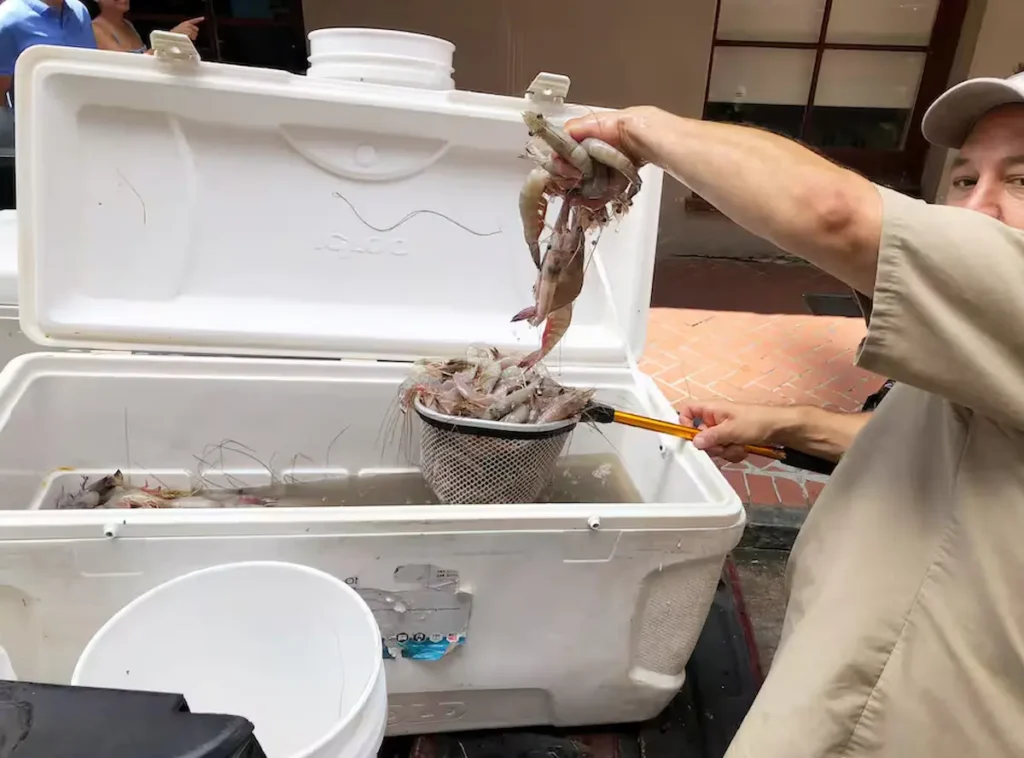
Jack keeps things easygoing and fun, sharing stories about the city’s food scene while showing you how to get that sauce just right. You can help out at the stove or relax with a glass of wine while the flavors come together.
Dinner is served in the courtyard with soft lights and good conversation. It feels warm, relaxed, and full of New Orleans charm. Bring your appetite and a bottle of wine to share with new friends.
3. Take a swamp tour by moonlight
Swamp tours at night are honestly way cooler than I expected them to be. Cajun Encounters and Bayou Swamp Tours both offer evening and sunset tours that’ll get you up close with alligators when they’re most active. I actually prefer the nighttime tours because the wildlife comes alive after dark – you’ll spot way more gators, raccoons, and nocturnal birds than during the day.
Jean Lafitte Swamp Tours runs tours until 11pm daily, just 25 minutes from downtown New Orleans. The airboat rides are thrilling as hell, and your Cajun captain will navigate through cypress trees and marshland while sharing stories about bayou life. Tours run about $90 per person with hotel pickup from the French Quarter included.
Most companies offer both covered pontoon boats and high-speed airboats. I’d go with the airboat if you want more excitement, but the pontoon boats are better for conversation and photos. Bring a light jacket because it gets chilly on the water, and don’t forget your camera – night shots of alligators with glowing eyes are pretty epic. Book ahead, especially on weekends, because these tours fill up fast.
- Want the thrill? This New Orleans airboat ride includes hotel pickup and gator sightings with local guides.
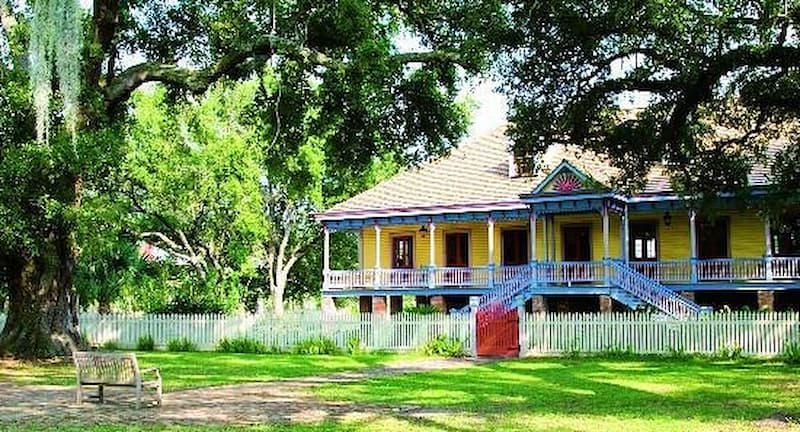
4. Experience the legendary Bourbon Street
Look, Bourbon Street is touristy as hell, but it’s also legitimately fun if you know how to do it right. Skip the neon-lit hurricane stands and head straight to the music. Start at Preservation Hall (726 St. Peter, just off Bourbon) around 7 PM, then work your way down.
House of Blues (225 Decatur, technically off Bourbon but close enough) books solid acts if you want recognizable names. For authentic jazz, Maison Bourbon (641 Bourbon) has been showcasing traditional jazz since 1963 – yes, it’s touristy, but the musicians are legitimate and there’s no cover charge. The Funky Pirate (727 Bourbon) features blues and R&B with local players who’ve been working the circuit for decades.
The balcony experience is worth doing once. Pat O’Brien’s (718 St. Peter) invented the Hurricane cocktail in 1943 and their balcony overlooks the courtyard, not the street chaos. For actual street views, try the Napoleon House balcony (500 Chartres) – their Pimm’s Cup is historically accurate and the building dates to 1797.
Practical notes: bathrooms are scarce and often disgusting. Use hotel lobbies (Omni Royal Orleans at 621 St. Louis is closest). The crowds peak between 10 PM and 1 AM Friday-Saturday, so plan accordingly. And yes, you can walk around with drinks – just keep them in plastic cups.

5. Walk through 300 years of New Orleans music history
This isn’t your average walking tour. You’ll follow a local record producer through the French Quarter and Treme, uncovering the real stories behind the city’s jazz, blues, and soul legends. From Louis Armstrong Park to Preservation Hall, every stop comes alive with music history and personality.
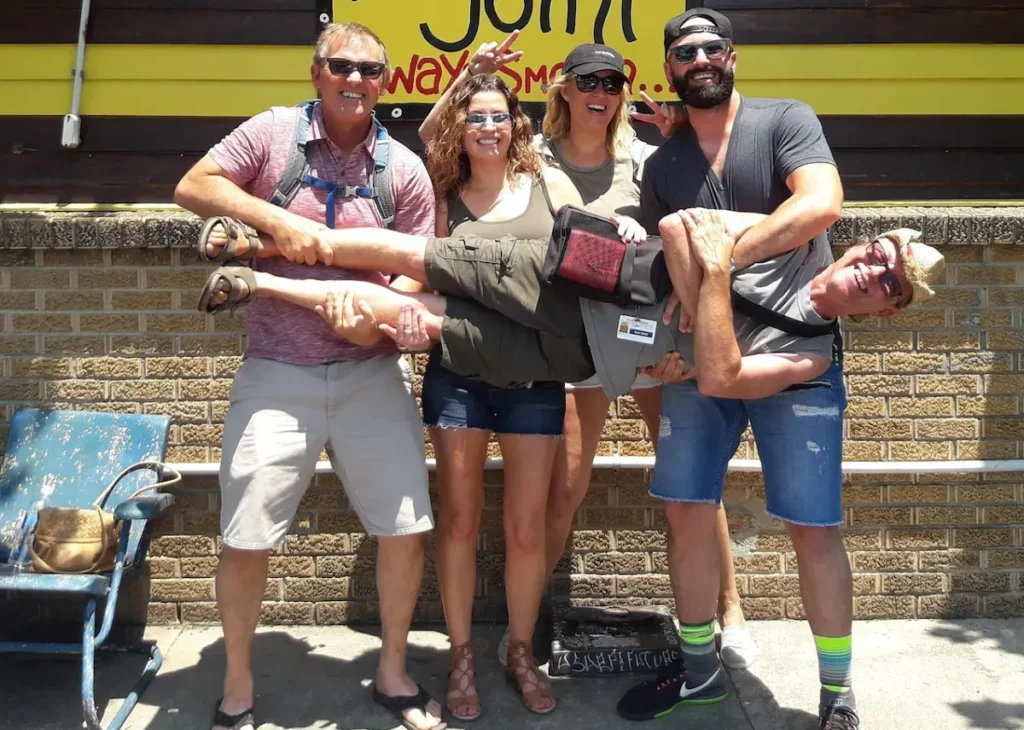
Your guide knows everyone and everything about the New Orleans sound, mixing storytelling with short music clips that make it feel like you’re walking through a living playlist. You’ll even pass recording studios and bars where legends got their start.
I recommend ending your night at the Louisiana Music Factory on Frenchmen Street, where the tour begins. Catch a live set, browse vinyl, and soak up the city’s rhythm before heading out for a drink nearby. There’s no better way to tune in to New Orleans after dark.
6. Join a brewery tour and craft beer crawl
New Orleans Brewery Tours has completely changed my opinion about brewery hopping in the city. Their private tours hit three breweries – Urban South, Port Orleans, and NOLA Brewing – with door-to-door pickup in a luxury van. You get six beer samples total, plus behind-the-scenes access to the brewing floors where you can actually see how the beer is made.
NOLA Brewing in the Irish Channel is my personal favorite stop. They’ve got 41 tap handles and serve legit NYC-style pizza alongside their craft beer. Urban South has killer classics like Paradise Park and Holy Roller IPA, while Port Orleans (founded by retired Saints player Zach Strief) specializes in amazing lagers.
Tours run about $65 per person and include transportation, tastings, and brewery tours. They operate seven days a week, but I’d book at least a week ahead because they fill up quickly. The whole experience takes about four hours, and honestly, it’s way better than bar hopping on Bourbon Street. You’ll learn about the brewing process, meet local beer makers, and sometimes catch live music at the breweries.
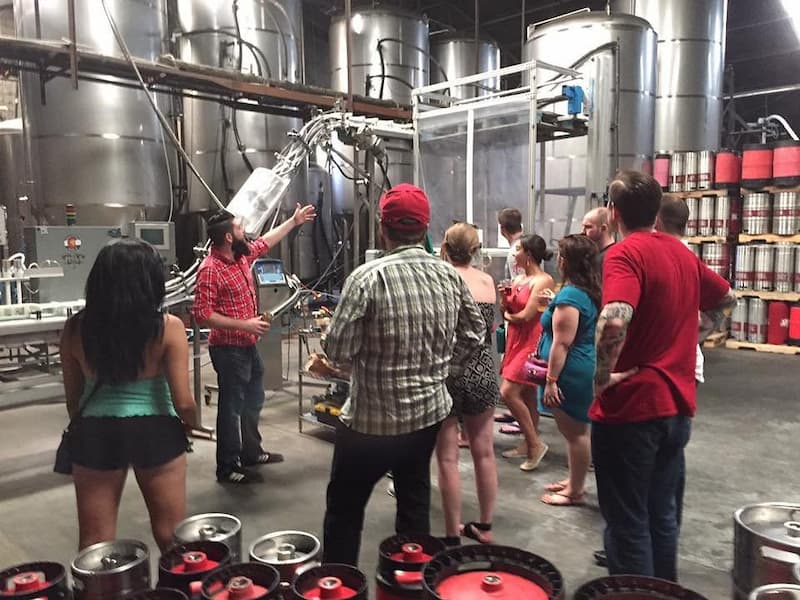
7. Listen to live jazz at Preservation Hall
This isn’t some nostalgic tourist trap – it’s the real deal. Preservation Hall has maintained the same mission since 1961: showcasing traditional New Orleans jazz performed by musicians who learned from the originators. The venue holds exactly 100 people, with about 30 seats and everyone else standing or sitting on floor cushions.
Shows run nightly at 8, 9, and 10 PM Monday-Wednesday, with additional 5 and 6 PM shows Thursday-Sunday. Tickets cost $25 for standing room, $40 for “Big Shot” reserved seating (which just means wooden benches). Buy online at preservationhall.com – they typically release tickets two weeks before the month. The 5 PM Thursday shows are often less crowded if you have flexibility.
The musicians rotate but you might catch Wendell Brunious (trumpeter from a legendary musical family), Mark Braud (carries on a five-generation musical lineage), or members of the Preservation Legacy Band. These aren’t tribute acts – they’re carrying forward an unbroken tradition that connects directly to Buddy Bolden and Jelly Roll Morton.
No air conditioning, no bar, no bathrooms inside the hall. Use the facilities at nearby bars beforehand. Photography and recording are prohibited, and they’re serious about it. The performances last exactly 45 minutes with complete turnover between shows. It’s intimate enough that you’ll hear every note and see every expression – which is exactly the point.

8. Hunt for Banksy murals on a street art tour
You don’t need a museum ticket to see world-class art in New Orleans. On this street art tour, the city itself becomes the gallery, with bold murals, hidden messages, and even a rare Banksy tucked into the mix.
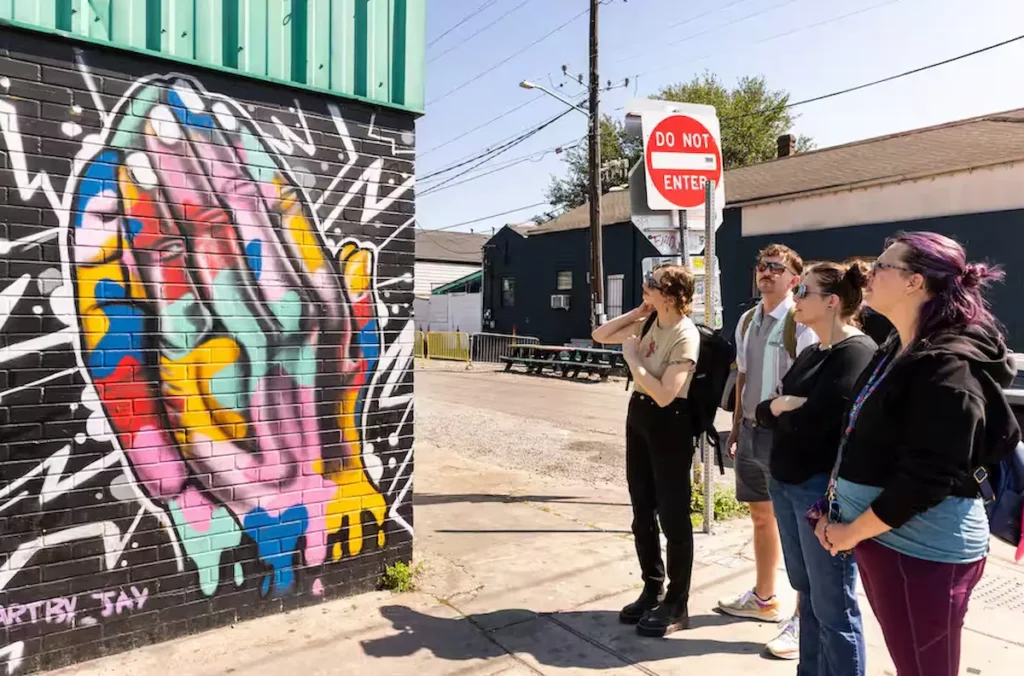
Led by local artists who live and breathe the scene, you’ll explore Bywater and the 9th Ward while hearing the stories behind the walls. The tour mixes local legends with international names, showing how graffiti, culture, and community collide in every corner. It’s relaxed, colorful, and full of photo stops worth the extra memory card space.
Bring water, wear comfy shoes, and stick around afterward for coffee or live music nearby on Frenchmen Street. It’s the perfect way to see how creativity pulses through the city after dark.
9. Take a sunset sailing cruise
The Creole Queen sunset dinner cruises are actually pretty romantic, but I was surprised by how much I enjoyed the smaller sailing options too. New Orleans Yacht Experience offers intimate sunset sails on Lake Pontchartrain with Captain Doug and his wife Rena – it’s way more personal than the big riverboat cruises.
For something different, check out the 2-Hour Date Night and Sunset Cruise on the Tchefuncte River. Captain Mike knows every inch of these waters and spots wildlife like a pro. The cruise includes a stop at a waterfront restaurant where you can grab dinner, and there’s usually live music. BYOB is allowed, which keeps costs down.
The Steamboat Natchez evening jazz cruises are the classic choice, running $43-58 per person depending on whether you add dinner. Boarding starts at 6pm with cruising from 7-9pm. I’d recommend the sunset timing over the later dinner cruises – the views of the Mississippi River and New Orleans skyline are incredible when the city lights start twinkling. Just arrive 30 minutes early because these popular cruises fill up, especially on weekends.
- The classic option: Steamboat Natchez jazz cruise includes live Dixieland music and optional Creole dinner.
- Another solid choice: Creole Queen jazz dinner cruise features live music and Victorian-style dining rooms.
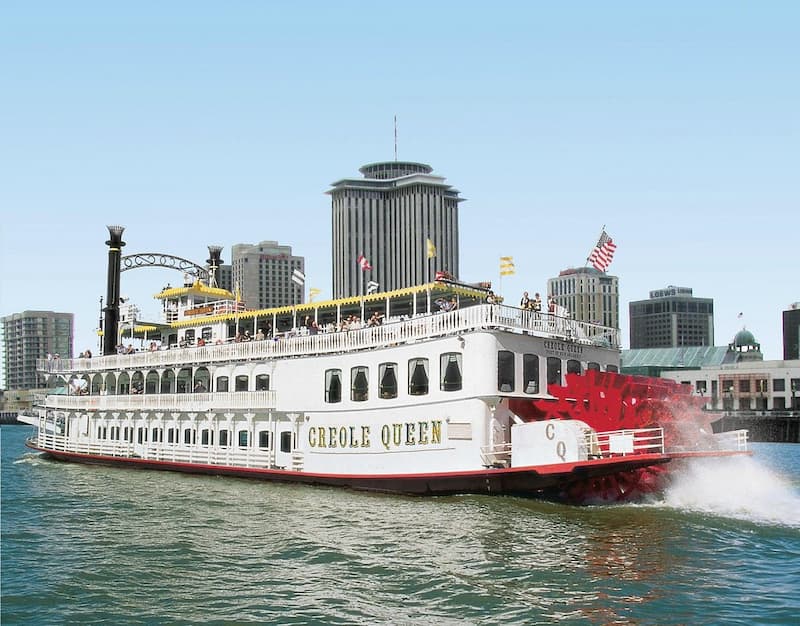
10. Join a guided ghost tour
New Orleans ghost tours range from historically accurate to complete nonsense. For actual documented hauntings backed by research, book with French Quarter Phantoms ($22 online at frenchquarterphantoms.com). Their guides use city archives, police reports, and newspaper records rather than just repeating urban legends.
The tours hit genuinely haunted locations: the LaLaurie Mansion (1140 Royal Street) where Delphine LaLaurie’s documented torture chamber was discovered in 1834, the Sultan’s Palace (716 Dauphine) site of the 1972 mass murder that inspired American Horror Story: Coven, and Hotel Monteleone (214 Royal) where staff still report elevator stops on the non-existent 14th floor.
Ghost City Tours offers family-friendly options at 8 PM nightly ($30), while their adult-only “Killers and Thrillers” tour at 9:30 PM ($35) covers documented murders and violent crimes. Tours By Foot runs free tours (tips expected) that focus more on history than supernatural claims.
Cemetery access after dark requires licensed guides due to city regulations. Haunted History Tours ($25-35) provides the only legal nighttime access to St. Louis Cemetery No. 1, where you’ll see Marie Laveau’s supposed tomb (it’s actually her daughter’s) and learn why above-ground burial became necessary in a city built below sea level. Tours last 90 minutes with about a mile of walking.
- Love spooky stories? This New Orleans ghost and voodoo walking tour covers LaLaurie Mansion and haunted landmarks.

11. Join a hands-on cooking class after dark
The New Orleans School of Cooking in the French Quarter has evening classes that are way more fun than I thought they’d be. Their hands-on classes let you actually cut, season, and prepare a complete Creole dinner with expert chefs, then sit down and eat what you’ve made. Classes run about 3 hours and include wine and beer throughout.
The Mardi Gras School of Cooking offers evening “Coolinary” experiences during August that combine cooking with cocktail making. You’ll learn to make classics like gumbo, jambalaya, and bananas foster while hearing stories about New Orleans food history. Classes are limited to 8-10 people, so it feels pretty intimate.
Private cooking experiences with local chefs are another solid option. Chef Charmaigne and other pros through Cozymeal will come to your rental space with all ingredients and equipment to teach authentic Cajun and Creole techniques. It’s perfect for groups and costs around $150-200 per person depending on the menu.
Most classes run $75-120 per person and include all food, drinks, and recipe cards to take home. I’d book at least a week ahead, especially for weekend evening classes. The French Quarter location at New Orleans School of Cooking is in a historic molasses warehouse, which adds to the whole experience.
- Learn the techniques: This New Orleans cooking demonstration class includes gumbo, jambalaya, and pralines with samples.
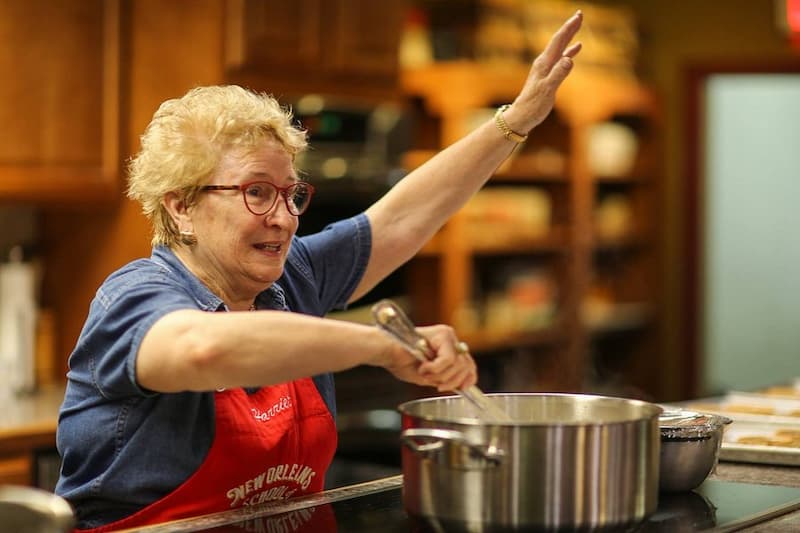
12. Take a Mississippi riverboat evening cruise
The Steamboat Natchez is the only authentic steam-powered riverboat still operating on the Mississippi River. Evening dinner cruises run year-round from 6-9 PM, departing from the Toulouse Street Wharf behind Jax Brewery (400 Toulouse Street). Tickets cost $89 for the cruise with three-course dinner, $45 for cruise-only.
The dinner features legitimate Creole dishes prepared onboard: jambalaya with andouille and shrimp, red beans and rice, carved roast beef, and bread pudding made from Leidenheimer French bread. The Grammy-nominated Dukes of Dixieland provide live jazz throughout the cruise. Two dinner seatings accommodate different schedules.
The boat travels upriver toward Audubon Park, then downriver past the French Quarter and Algiers Point. You’ll see the city’s working port operations – New Orleans handles more cargo tonnage than any U.S. port except Houston. The captain provides historical commentary about river navigation and the port’s economic significance.
Note: The Steamboat Natchez undergoes annual Coast Guard inspection starting July 15, 2025. During maintenance periods, the Riverboat City of New Orleans substitutes with identical service. Parking costs $15-20 in nearby lots. Board 30 minutes early to explore the engine room and hear the 5:30 PM calliope concert. The boat operates rain or shine with full indoor seating available. For all these reasons, I highly recommend doing a dinner cruise in New Orleans after dark!
- Book the authentic experience: Steamboat Natchez evening jazz cruise with optional three-course Creole dinner.

13. Explore St. Roch Market and late-night food halls
St. Roch Market is honestly one of the best-kept secrets for late-night eating in New Orleans. This restored 1875 market hall stays open until midnight on weekends and houses about a dozen local food vendors under one roof. I love that it feels like a real neighborhood spot rather than a tourist trap.
You’ll find everything from Vietnamese pho and fresh oysters to Korean-inspired dishes and craft cocktails. Mayhaw does incredible contemporary Southern food, while Café Carmo serves healthy Latin-Caribbean fusion. The communal seating makes it easy to try multiple vendors and meet locals.
City Market in Mid-City is another solid option with diverse vendors offering everything from BBQ to sushi. It’s got more of a food court vibe but stays open later than most restaurants. Buffa’s Bar & Restaurant between the French Quarter and Marigny recently went back to 24-hour service, making it a rare late-night option for full meals.
Late-night food scenes are still recovering from pandemic changes, but these markets are leading the charge. Most food hall vendors close between 9-11pm on weeknights and midnight on weekends. I’d check social media for current hours since some vendors adjust seasonally. Prices are reasonable – most dishes run $8-15, and you can easily share between multiple vendors.

14. Check out Frenchmen Street
Frenchmen Street is where New Orleans musicians actually hang out after their Bourbon Street gigs end. The three-block stretch between Decatur and Dauphine features the city’s most authentic music scene without the tourist markup.
Start at The Spotted Cat Music Club (623 Frenchmen) – it’s tiny, cash-only, and showcases traditional jazz Tuesday through Sunday starting around 8 PM. No cover charge, just tip the musicians generously. Next door, Snug Harbor (626 Frenchmen) books serious jazz acts in a proper listening room with table service and a solid Creole menu.
Blue Nile (532 Frenchmen) spans two floors with funk, brass bands, and soul music. The upstairs balcony provides perfect people-watching over the street scene below. d.b.a. (618 Frenchmen) combines excellent live music with the neighborhood’s best beer selection – over 200 varieties plus an extensive whiskey menu.
The Frenchmen Art Market operates nightly in a fenced lot at 619 Frenchmen from 7 PM to midnight (1 AM weekends). Local artists sell handmade jewelry, paintings, and crafts directly – prices are reasonable and you’re supporting actual New Orleans creators.
Food options include Dat Dog (601 Frenchmen) for late-night comfort food until 3 AM weekends, Three Muses (536 Frenchmen) for upscale small plates with live music, and the weekend Burrito Man who sets up on corners selling $5 head-sized burritos. The pineapple pork is legendary among locals.
- First time on Frenchmen? This VIP music pub crawl includes skip-the-line access and a cocktail.

15. Experience live music on a jazz riverboat cruise
The Paddlewheeler Creole Queen jazz dinner cruises blow away anything you’ll find on Bourbon Street. Sullivan Dabney Jr. and the Muzik Jazz Band perform while you cruise down the Mississippi River with killer skyline views. The jazz is authentic, not the tourist show stuff you get elsewhere.
Steamboat Natchez evening cruises feature traditional live jazz bands and that iconic steam calliope concert before boarding. The Riverboat City of New Orleans (filling in while the Natchez gets renovated) has four decks to explore and the same authentic riverboat experience. I actually prefer the top deck for views and acoustics.
These aren’t just dinner cruises with background music – the jazz is the main event. Musicians walk around the dining rooms and outdoor decks, creating an intimate club atmosphere on the water. The Creole Queen buffet is surprisingly good too, featuring actual Creole dishes rather than generic cruise food.
Cruises run 2-2.5 hours and cost $60-90 per person depending on dinner options. The 7pm departure times are perfect for sunset views. I’d book a few days ahead, especially during festival season. Pro tip: grab a spot on the outdoor deck during the music sets – the sound carries beautifully over the water and you’ll get better photos of the city lights.
- For authentic jazz: Steamboat Natchez evening cruise features Grammy-nominated Dukes of Dixieland and Creole buffet.
- The Creole Queen alternative: Paddlewheeler Creole Queen jazz dinner cruise features Victorian-style dining and live band.

16. Take a nighttime guided cemetery tour
St. Louis Cemetery No. 1 requires guided tours due to city ordinance – you cannot enter independently. The cemetery, established in 1789, contains above-ground tombs necessary because New Orleans sits below sea level. During yellow fever epidemics, bodies buried underground would literally float back up.
Save Our Cemeteries offers the most historically accurate tours ($20) focusing on burial customs, architecture, and notable residents like Homer Plessy (of Plessy v. Ferguson) and chess champion Paul Morphy. Tours run daily at 10 AM and 1 PM with additional 3 PM weekend tours.
For nighttime access, book with licensed operators like French Quarter Phantoms or Haunted History Tours ($25-35). These 90-minute tours cover the cemetery plus surrounding Tremé neighborhood, explaining how above-ground burial influenced New Orleans’ unique jazz funeral traditions.
Marie Laveau’s tomb (actually her daughter’s) remains the most visited site. The Xs carved into the tomb are modern tourist additions – the original Voodoo Queen’s burial customs didn’t include such markings. The pyramid tomb belongs to actor Nicolas Cage, who purchased it in 2010 for his future use.
Wear closed-toe shoes – the walkways are uneven 19th-century brick and stone. Bring water and sun protection for daytime tours. The cemetery sits in the Tremé neighborhood, historically significant as the birthplace of jazz but requiring caution after dark if walking independently.
- After dark access: New Orleans cemetery bus tour includes exclusive entry to Odd Fellows Rest with EMF readers.

17. Hunt for beignets at 24-hour spots
Café du Monde isn’t 24 hours anymore (closes at 11pm weeknights, midnight weekends), but Morning Call Coffee Stand in City Park still serves beignets and café au lait until midnight daily. I actually prefer Morning Call because it’s less touristy and the beignets are just as good.
Buffa’s Bar & Restaurant recently brought back 24-hour service and added a breakfast menu served from midnight to noon. Their beignets aren’t as famous as Café du Monde, but they hit the spot when you’re craving that late-night sugar fix after bar hopping.
During Beignet Fest in November, you’ll find dozens of creative beignet variations from crabmeat-stuffed to bananas foster-filled. But for classic late-night beignets, stick with Morning Call or hunt down food trucks that sometimes park near Frenchmen Street after bars close.
The traditional café au lait and beignet combo runs about $6-8 at most spots. Morning Call has that classic New Orleans coffeehouse atmosphere with locals playing chess and reading newspapers even late at night. It’s a much more authentic experience than the tourist-packed Café du Monde, especially after 9pm when the crowds thin out. Just don’t expect the same historic French Quarter setting – Morning Call is in a pavilion in City Park, but the coffee and beignets are the real deal.
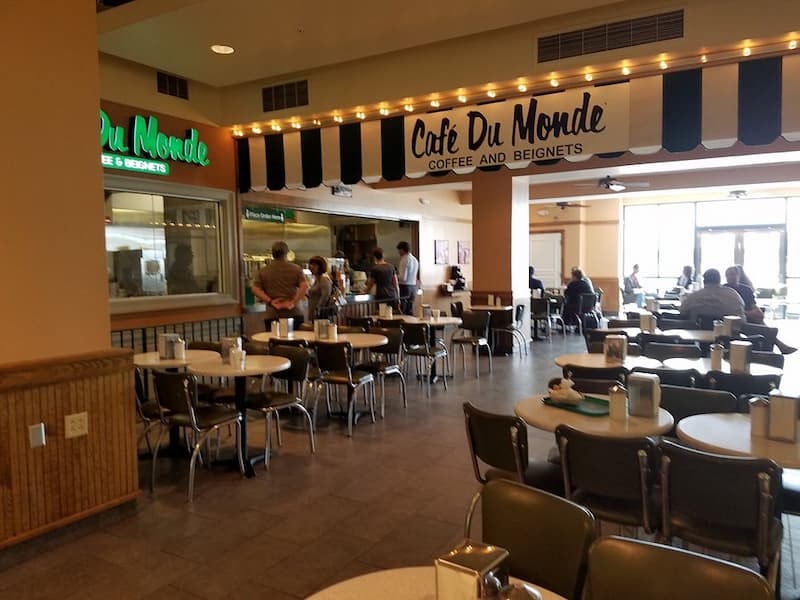
18. Walk through the Garden District
The Garden District showcases antebellum mansions built by wealthy Americans who wanted to outdo the Creole aristocracy in the French Quarter. Magazine Street provides the main commercial corridor with excellent restaurants and bars staying open late for evening exploration.
Start at Washington Avenue and Magazine Street, then work your way toward Jackson Avenue. I love the Commander’s Palace (1403 Washington). It serves dinner until 10 PM in their landmark turquoise and white Victorian building. Even if you’re not dining, the exterior architecture exemplifies the district’s ornate style.
Anne Rice’s former home (1239 First Street) draws literary pilgrims to its Greek Revival mansion where she wrote several Vampire Chronicles novels. The house tour isn’t available, but the exterior showcases typical Garden District architecture: raised foundation, wraparound galleries, and elaborate millwork.
Magazine Street between Jackson and Louisiana offers late-night dining options. Coquette (2800 Magazine) serves contemporary Creole until 10 PM Tuesday-Saturday. Tracey’s (2604 Magazine) provides authentic Irish Channel neighborhood atmosphere with excellent roast beef po’boys until midnight.
The oak-lined streets (First, Second, Third, Fourth, Coliseum, and Chestnut) feature mansions worth viewing after dark when interior lighting reveals architectural details. St. Charles Avenue streetcar runs 24/7 for $1.25, connecting the district to downtown. The ride itself provides narrated views of additional mansions and Loyola/Tulane universities.

19. Take a nighttime airboat adventure
High-speed airboat tours at dusk and after dark are absolutely wild. Bayou Swamp Tours offers evening departures until 6pm that transition from sunset into twilight – you get the best of both worlds with golden hour photos and night wildlife activity.
Cajun Pride Swamp Tours runs tours until 4:15pm seasonally, which is perfect timing for catching the transition to evening when alligators become more active. The 90-minute tours on custom pontoon boats get you deep into the bayou where you’ll spot way more wildlife than daytime tours. I was shocked by how many raccoons, turtles, and night birds we saw.
Jean Lafitte Swamp Tours operates until 11pm and offers both covered boats and open airboats. The airboat experience is like a controlled roller coaster through the swamp – these things hit 35+ mph and can navigate through areas where regular boats can’t go. Your Cajun captain will cut the engine periodically so you can hear the swamp sounds and spot alligator eyes reflecting in the spotlight.
Tours run $75-90 per person with hotel pickup from downtown included. The evening timing means cooler temperatures and more active wildlife, but bring bug spray and a light jacket. Book at least 24 hours ahead since evening tours are popular but run less frequently than daytime departures. The combination of speed, wildlife, and authentic bayou culture makes this way more memorable than typical tourist activities.
- High-speed thrills: New Orleans airboat ride gets you close to gators with hotel transportation included.

20. Dinner at a Creole restaurant
Looking for another top attraction in New Orleans at night? Neyow’s Creole Café (3332 Bienville Street) serves authentic neighborhood Creole food without tourist pricing or atmosphere. Located in Mid-City near Bayou St. John, it’s where locals eat when they want the real thing. The chargrilled oysters come six to an order for $12, topped with garlic, herbs, and Romano cheese – simple preparation that lets the Gulf oysters shine.
Their red beans and rice on Mondays follows traditional New Orleans custom. Monday was historically wash day when women needed a dish that could simmer unattended while doing laundry. Neyow’s version includes proper andouille sausage and the rice is cooked separately, not mixed together like amateur versions.
The gumbo changes daily but always includes a proper dark roux that takes 45 minutes to prepare correctly. Thursday features seafood gumbo with shrimp, crabmeat, and oysters. Saturday brings chicken and andouille. They serve it over rice with hot sauce and crackers on the side – the traditional accompaniments.
The Bow Wow Punch ($8) combines multiple rums with fruit juices and has developed a cult following among locals. It tastes deceptively mild but packs serious alcohol content. Dinner entrées range from $15-22 with generous portions designed for working people, not tourists taking Instagram photos.
I recommend making a reservation for weekend dinner service. The atmosphere stays neighborhood casual – this isn’t fine dining but rather authentic Creole home cooking prepared by people who learned from their grandmothers.

21. Watch street performers at Jackson Square
Jackson Square transforms after 7 PM when the daytime portrait artists pack up and the evening musicians take over. The performers here aren’t random buskers – many are professional musicians supplementing club gigs or showcasing their skills to potential bookers.
Position yourself near the Presbytère (751 Chartres) for the best acoustics. The cathedral steps provide seating, though the iron benches along the square perimeter offer better views of multiple performers simultaneously. The Pontalba Buildings’ galleries create natural amplification for acoustic instruments.
Regular performers include Doreen’s Jazz New Orleans (traditional jazz trio, usually Thursday-Sunday), various brass bands that rotate through weeknights, and individual blues guitarists who’ve been working the square for decades. Tipping is expected – $5-10 for extended listening is appropriate, especially if you’re taking photos or videos.
The square’s history adds context to the performances. Andrew Jackson’s statue commemorates the Battle of New Orleans, fought two weeks after the War of 1812 officially ended due to slow communication. The cathedral, rebuilt in the 1850s, replaced the original 1718 structure where Louisiana Purchase ceremonies occurred.
For late-night food after the performances, Mother’s Restaurant (401 Poydras) serves debris roast beef po’boys 24/7. The walk from Jackson Square takes 10 minutes and passes through the business district, well-lit and safe after dark.

22. Visit the Frenchmen Art Market
The Frenchmen Art Market operates in a fenced lot at 619 Frenchmen Street, open nightly from 7 PM until midnight (1 AM Friday-Saturday). This isn’t tourist junk – local artists rent booths monthly to sell original work directly. You’ll find legitimate handmade items at reasonable prices because there’s no retail markup.
Regulars include metalworker Johnny Donnels creating custom jewelry and sculptures, photographer Michael DeMocker selling local scene prints, and various artists producing everything from silk-screened shirts to hand-blown glass pieces. Many artists are present at their booths and willing to discuss techniques or accept custom commissions.
Prices reflect local economics rather than tourist expectations. Original paintings start around $25-50, handmade jewelry runs $10-40, and screen-printed shirts cost $15-20. Most vendors accept cash and cards, though bringing cash helps with smaller purchases and tips.
The market’s location puts you in the heart of Frenchmen’s music scene. You can browse art while live music spills out from nearby clubs, creating a natural soundtrack for shopping. String lights provide adequate illumination, and the fenced area feels secure for evening browsing.
The market closes during major storms but operates year-round otherwise. Weekend nights feature more vendors and larger crowds. Weeknight visits offer better conversation opportunities with artists and more relaxed browsing without navigating around large groups.
- Read Next: 12 Gorgeous Places in New Orleans

23. Relax at Hot Tin rooftop bar
When in New Orleans, you’ve gotta check out Hot Tin’s rooftop bar. It occupies the 11th floor of the Pontchartrain Hotel (2031 St. Charles Avenue) in the Garden District. The bar provides 270-degree views of downtown New Orleans, the Mississippi River bend, and extending toward Lake Pontchartrain. It’s designed as a 1940s artist’s loft with eclectic furniture, vintage collectibles, and glass doors opening onto outdoor terraces.
I love the cocktail menu here. It features house creations like the “Garden District” (gin, elderflower, cucumber, lime) and “River Bend” (bourbon, fig, lemon, herbs) alongside classic options. Expect $12-16 per cocktail with premium ingredients and proper preparation. They also stock local Abita beer and a curated wine selection focusing on French and California bottles.
Operating hours are 2 PM to midnight Sunday-Thursday, until 1 AM Friday-Saturday. The bar maintains a strict 21+ policy with no exceptions. Seating is first-come, first-served with no reservations accepted. Arrive around 5:30 PM for sunset views or after 9 PM when the city lights create dramatic scenery.
The outdoor terraces provide the best photo opportunities, especially the western-facing balcony overlooking St. Charles Avenue and the river. The indoor space stays comfortable year-round with climate control, while outdoor areas can be hot in summer or cool in winter – dress accordingly.
Parking costs $15-20 in nearby lots or use street parking on St. Charles (check restrictions). The St. Charles streetcar stops directly in front of the hotel, providing $1.25 transportation from downtown or the French Quarter.
- Read Next: 12 Best Places to Stay in New Orleans






